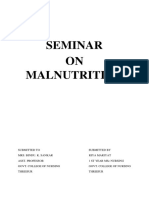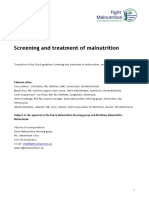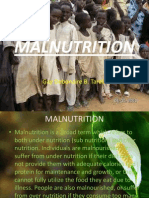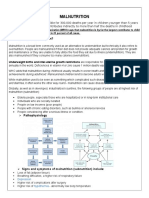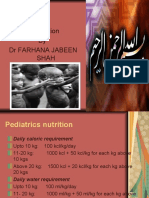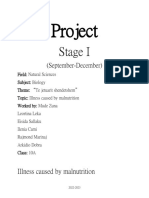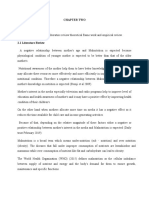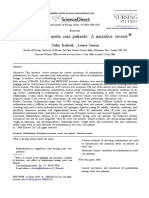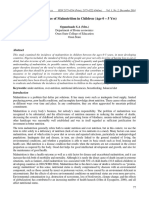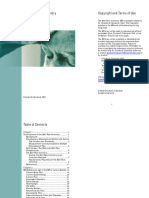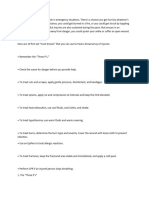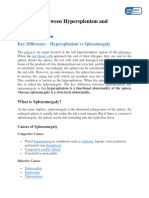0% found this document useful (0 votes)
175 views11 pagesConsequences of Malnutrition I
Malnutrition has severe consequences. It increases risk of infection and disease by weakening the immune system. It impairs brain development in children, potentially causing lifelong effects. The body begins breaking down its own tissues, like muscle and fat, for energy when it is malnourished. Malnutrition negatively impacts communities by reducing school performance in children and increasing rates of illness and cognitive impairment in the elderly.
Uploaded by
api-495635891Copyright
© © All Rights Reserved
We take content rights seriously. If you suspect this is your content, claim it here.
Available Formats
Download as PDF, TXT or read online on Scribd
0% found this document useful (0 votes)
175 views11 pagesConsequences of Malnutrition I
Malnutrition has severe consequences. It increases risk of infection and disease by weakening the immune system. It impairs brain development in children, potentially causing lifelong effects. The body begins breaking down its own tissues, like muscle and fat, for energy when it is malnourished. Malnutrition negatively impacts communities by reducing school performance in children and increasing rates of illness and cognitive impairment in the elderly.
Uploaded by
api-495635891Copyright
© © All Rights Reserved
We take content rights seriously. If you suspect this is your content, claim it here.
Available Formats
Download as PDF, TXT or read online on Scribd
/ 11

